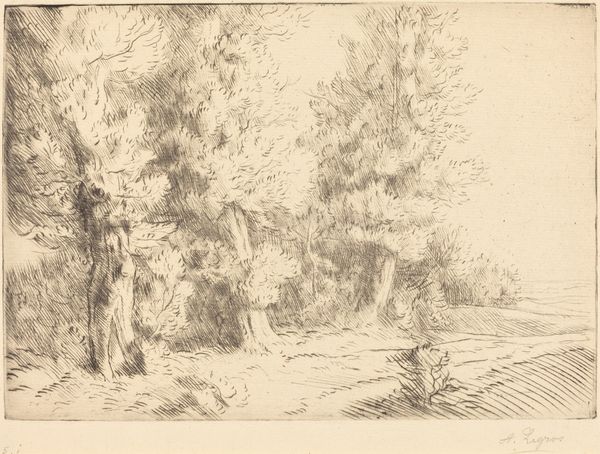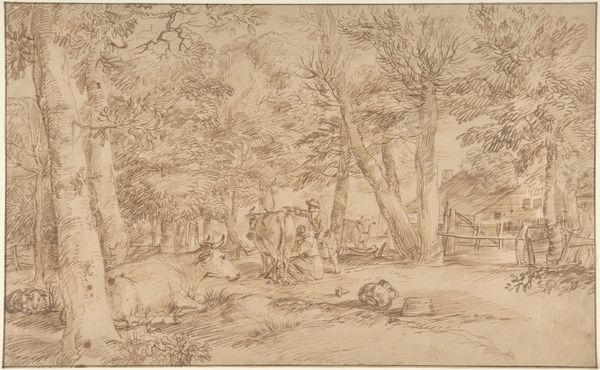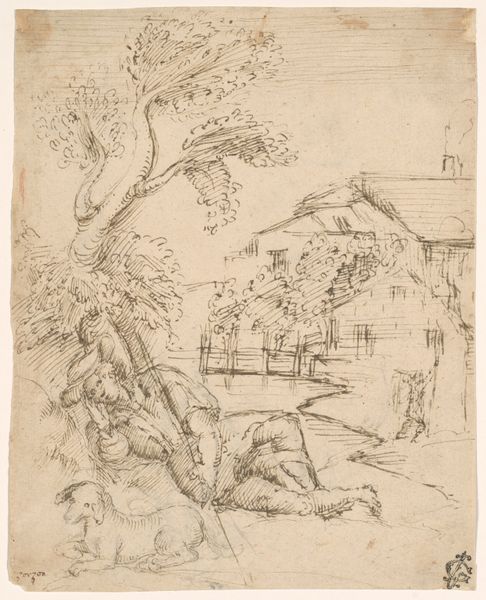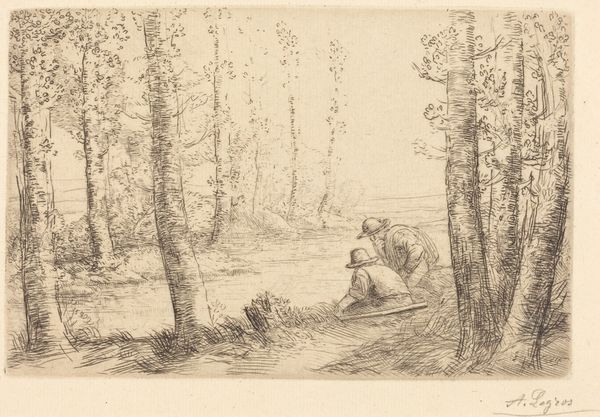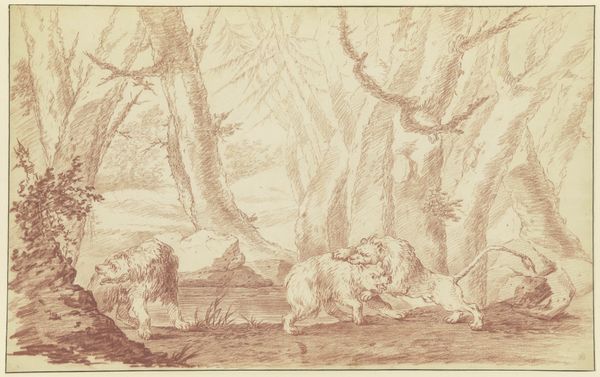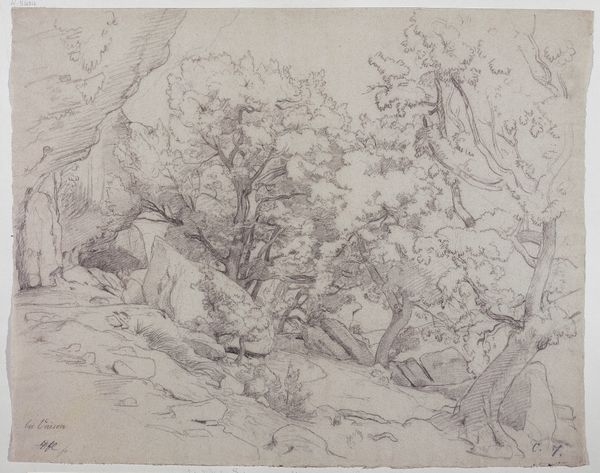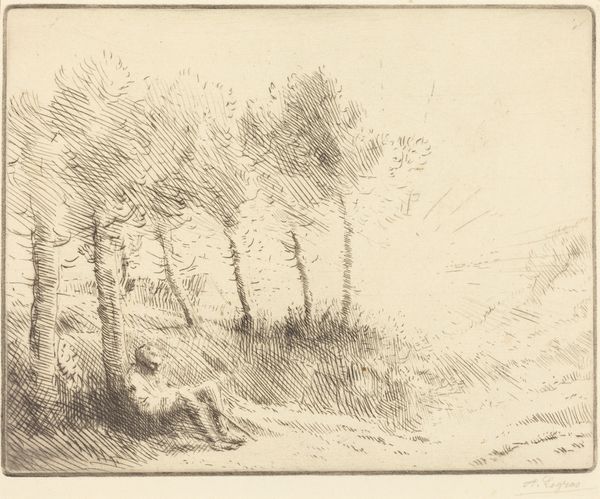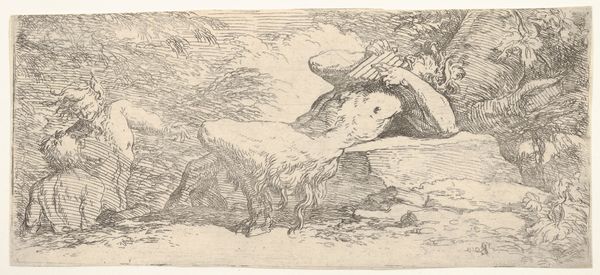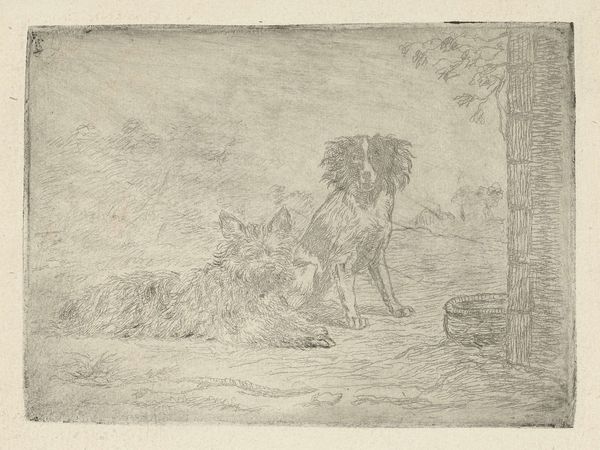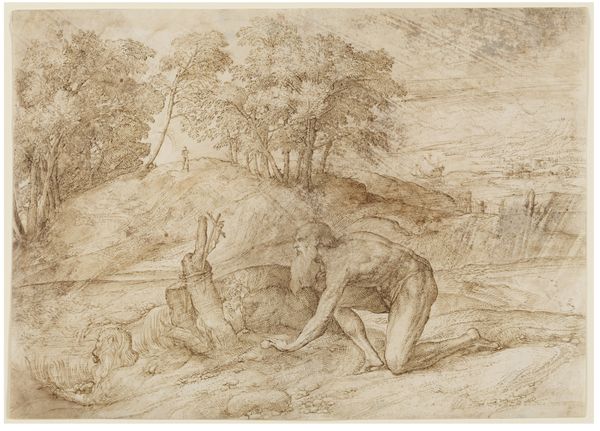
drawing, pencil, architecture
#
drawing
#
landscape
#
pencil
#
architecture
Copyright: Public Domain
Editor: Here we have Wilhelm Altheim's 1908 pencil drawing, "Bauer vor seinem Hause, Holz hackend," or "Farmer Chopping Wood in Front of His House." There's a distinct rustic feel, a glimpse into rural life. What's your read on this piece? Curator: It’s tempting to see this as a purely observational study of rural life, and it certainly functions on that level. But consider the date: 1908. Europe was on the cusp of immense social and political upheaval. Representations of rural life, like this one, become interesting as visual counterpoints to rapid industrialization. How might this image function within that broader cultural landscape? Editor: So you’re saying that depicting this rural scene could be a commentary on industrialization? Perhaps even a yearning for simpler times? Curator: Exactly! The ‘common man’ and the land itself become politicized in imagery. This isn’t just a farmer chopping wood; it's a visual claim to authenticity, rootedness, perhaps even resistance against the perceived alienation of modern urban life. Look at the deliberate detail given to the house, blending in with the surrounding landscape; Altheim emphasizes the inseparability of man and nature, maybe even idealizing it. What kind of message might that convey to its early 20th-century audience? Editor: It highlights a connection to nature and an idealized self-sufficiency. The detailed pencil work, rather than feeling academic, lends to that "authentic" sensibility. Curator: Precisely. Consider who was commissioning and consuming such images at the time. The burgeoning middle class, for instance, might have viewed this image as a nostalgic escape or a symbol of enduring values in a rapidly changing world. Editor: It’s amazing how a simple drawing can hold so much more meaning. It challenges you to consider it beyond the surface representation. Curator: And that's where the real power of art history lies - revealing those layers of meaning and their connection to broader historical contexts.
Comments
No comments
Be the first to comment and join the conversation on the ultimate creative platform.

